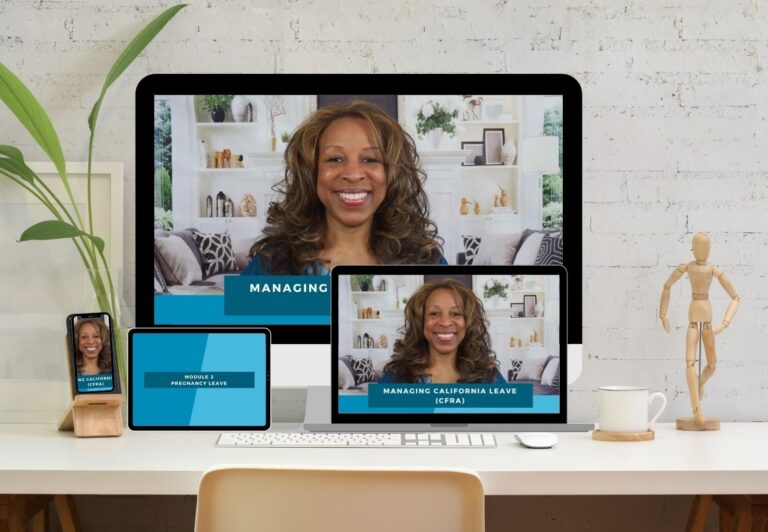What Is That Smell?!

By VICKY BROWN
If you’ve been in a leadership role for any significant period of time, you‘ve heard some version of those dreaded words – “Sally smells bad.”
Now what are you going to do. Maybe you should just tell Sally to be sure to take a shower before coming to work; or maybe you can give her some perfume and hope she gets the hint.
It’s an awful conversation to contemplate, and brings up all the worst confrontation scenarios you can imagine. Sally cries, or screams, or is mortified or…choose one or all of the above. How about just move Sally to an isolated work area so other employees don’t have to deal with the issue.
Well – be careful. You may find yourself inadvertently discriminating against Sally, or violating her rights in other ways.
The simple fact is (provided you’ve verified that indeed Sally has an odor issue), you have no idea as to the root cause of Sally’s smell. While it could be as simple as more rigorous attention to the details of thoroughly washing; it could be related to an illness, or medication, or a religious practice.
While speaking with Sally, you have to be sensitive to all possibilities. And yes, you do have to speak with Sally, you don’t have the luxury of hoping the situation will just take care of itself. You have to keep in mind that the offended employee or employees – have rights too. They have the right to work in a good environment.
Now first off, it’s a good idea to review your company policies – do you have a dress code policy? Does it mention that employees have to exercise good judgment regarding their appearance and hygiene.
Yes, I know the dress code thing can be a can of worms, but it does have its place. While it’s not a particularly good idea to try to narrowly define what can and can’t be worn down to the n’th degree, there is absolutely nothing wrong with insisting that your employees use good judgement, and stick with business attire.
And you should definitely outline how any difficulties will be dealt with. You may want to have a casual environment – and again, there isn’t anything wrong with that. But your team members do need to have some guardrails, and understanding of possible next steps if they don’t exercise good judgement.
“…provided it’s determined there is an issue, your approach with Sally has to be carefully modulated.“
Next – you need facts. So be sure to do a thorough investigation, including getting details from the individual that brought the problem to your attention: when does it happen, is it a certain time of day; where does it happen, what’s the proximity range; has anyone approached Sally. Also, talk to others involved – oh, I don’t mean go around to everyone in the department and ask – Hey, do you think Sally stinks? I mean, discretely question Sally’s manager, and, if possible, put yourself in the environment.
Now provided it’s determined there is an issue, your approach with Sally has to be carefully modulated. Choose an absolutely private place, simply and clearly explain that there is an odor coming from her work area, and it’s causing some discomfort to her co-workers.
Don’t make assumptions as to the cause, simply let Sally know that you would like her to do everything in her power to take care of the issue. In fact, you might even want to refer to the company dress code policy here.
If Sally replies that the issue is related to a disability or medically related problem, you may find the situation falls under the Americans with Disabilities Act. So in that case, thank Sally for the information, inform her you’ll get back to her, and call your labor attorney immediately.
If your company has more than 15 employees, and this situation falls under ADA regulations, you’re possibly about to enter accommodation discussions with Sally, and you should not undertake that action until you have guidance from your counsel.

So, one of your employees just told you that she’s pregnant. Feeling overwhelmed, with no idea where to start? After all, HR just got dumped on your plate. It’s not your zone of genius, and you don’t want it to be.
Managing California Leave is your answer. It’s an easy to understand course, that explains what the various leave programs are – without the HR gobbledy gook. And it gives you a clear step by step guide that walks you through the process of putting someone on leave
Yep, you get all the forms, notices and documents too. Everything you need to do it right and do it fast. After all, you don’t have all day – you have other things to do!
Use the link to get an Insider’s sneak peek And don’t worry – you’ve got this. And we’ve got you.
But, if Sally doesn’t mention a disability or medically related issue, don’t make assumptions and/or bring up the possibility yourself. Your role is to notify Sally of the issue, explain that it has to be corrected, and later to verify that the issue is resolved. Also, keep in mind, if the issue is based in cultural practices, the better course of action might be to provide some diversity training for your employees. And, always ensure that Sally isn’t harassed or ostracized by her co-workers.
Every situation is different, and difficult. But there are some general – Don’t Ever Do/Don’t Ever Say – points – things like:
“You should change your diet”
“How often do you bathe”
“You smell like curry”
“It may be because you are getting old”
All of these statements make assumptions as to the cause, and some are downright offensive. Well, actually they are all downright offensive.
And – under no circumstances should you just ignore the issue and hope it goes away. That’s a recipe for disaster. You’re going to have to take quick action and confront the issue, so it doesn’t become even more of a problem.
And, always remember, the goal is to resolve the issue for Sally’s co-workers, while respecting Sally’s dignity and allowing her the space to correct the problem.
Spread the word
MORE HUMAN, MORE RESOURCES
310.308.7680 option 1
hello@idomeneoinc.com

